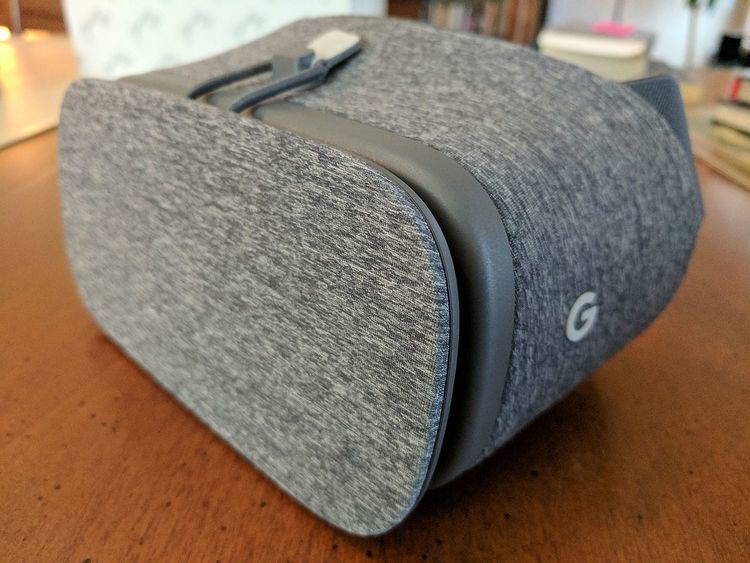Introductory price Daydream View: US$79 | Release date November 10, 2016 | |
 | ||
Type Virtual reality platform Operating system | ||
Daydream is a virtual reality (VR) platform developed by Google for Android Nougat, the seventh major version of the Android mobile operating system. It was announced at the Google I/O developer conference in May 2016, with the first VR headset released on November 10, 2016.
Contents
Contrasting with Google's first VR platform, Google Cardboard, Daydream is built into the Android operating system starting with the release of Android 7.1 Nougat. The platform includes both software and hardware specifications, designating compatible phones "Daydream-ready".
Phones
Daydream will only work on certain newer phones with specific components. Google announced at the Google I/O conference that eight hardware partners will make Daydream-ready phones: Samsung, HTC, LG, Xiaomi, Huawei, ZTE, Asus and Alcatel. Phones will dedicate processing power to the Daydream mode in order to reduce latency and prevent nausea.
The following phones have been confirmed as Daydream-ready:
Headset
The Google Daydream View was announced on October 4, 2016, as the first headset for Daydream. Daydream-ready smartphones can be placed in the front compartment of the Daydream View and then viewed in VR through the Daydream View's two lenses. The View distinguished itself from previous VR head mounts by being constructed out of a light-weight cloth material, as well as featuring capacitive nubs and an NFC chip to simplify the process of setting up virtual reality viewing.
The Daydream View was released on November 10, 2016.
The Daydream View launched in a "Slate" color option. Two new color choices, "Crimson" and "Snow", became available on December 8, 2016.
In a review of the Daydream View, Adi Robertson of The Verge wrote that the headset was the "best mobile headset" she'd ever used, complimenting its "squishy foam-and-fabric body" being "significantly smaller, lighter, and more portable than the Gear VR", and that its design "keeps the lenses relatively protected during travel". She also liked the device's weight distribution, writing that it "rests more weight on your forehead than your cheeks, an option I've found more comfortable" and that allows her to "wear it easily for hours at a time". She also praised the material, particularly its plastic sliders rather than velcro patches on the head strap, writing that it allows "a wider range of sizes and avoids gathering lint", and that the View's overall design "could almost pass for an airplane sleep mask", meaning that it "avoids looking ostentatiously high-tech or intimidating".
Controller
Daydream headsets are packaged with a wireless controller. This controller can be used for interacting with the virtual world through button presses or through waving the device. On-board sensors are used to track the orientation of the controller and approximate the position of the user's hand. The Daydream View's controller can be stored inside the headset while not in use. The controller has a touch pad, two circular buttons (one functioning as a home button and one functioning as an app-specific button), and two volume buttons, along with a status light. The controller is rechargeable and charges via USB-C. On its support pages, Google notes that the Daydream View "doesn’t include a charger or cables" and instead directs users to purchase those from the Google Store.
Software
In May 2016 at the Google I/O developer conference, Google announced that a virtual reality (VR) mode called "Daydream" would be coming to the new Android release Nougat.
The VR mode lets players use virtual reality apps, including YouTube, Google Maps Street View, Google Play Movies & TV, and Google Photos in an immersive view. Google recruited media companies like Netflix and Ubisoft for entertainment apps.
In January 2017, Google opened the Daydream program for all third-party developers.
